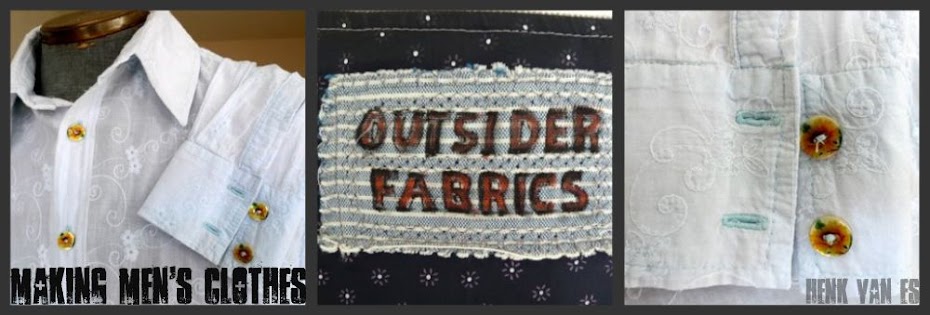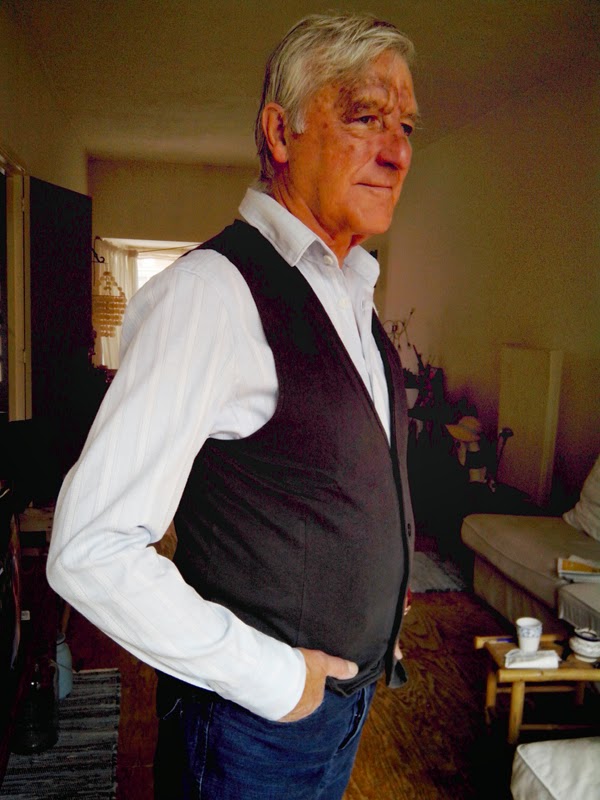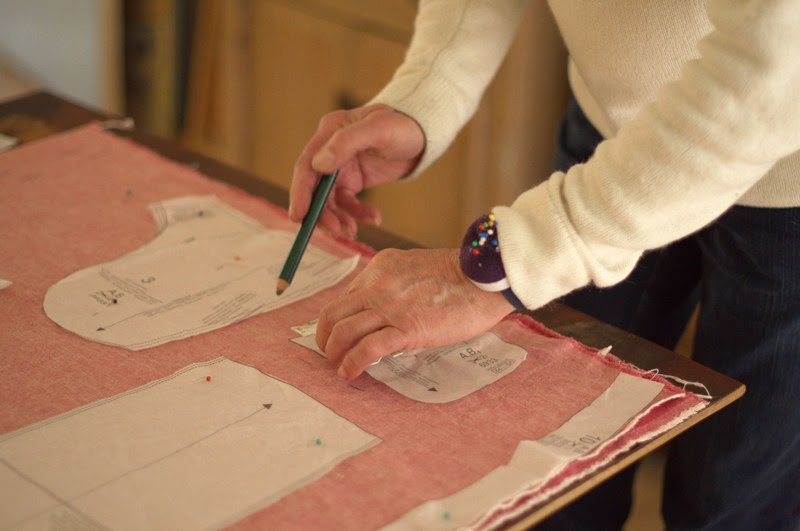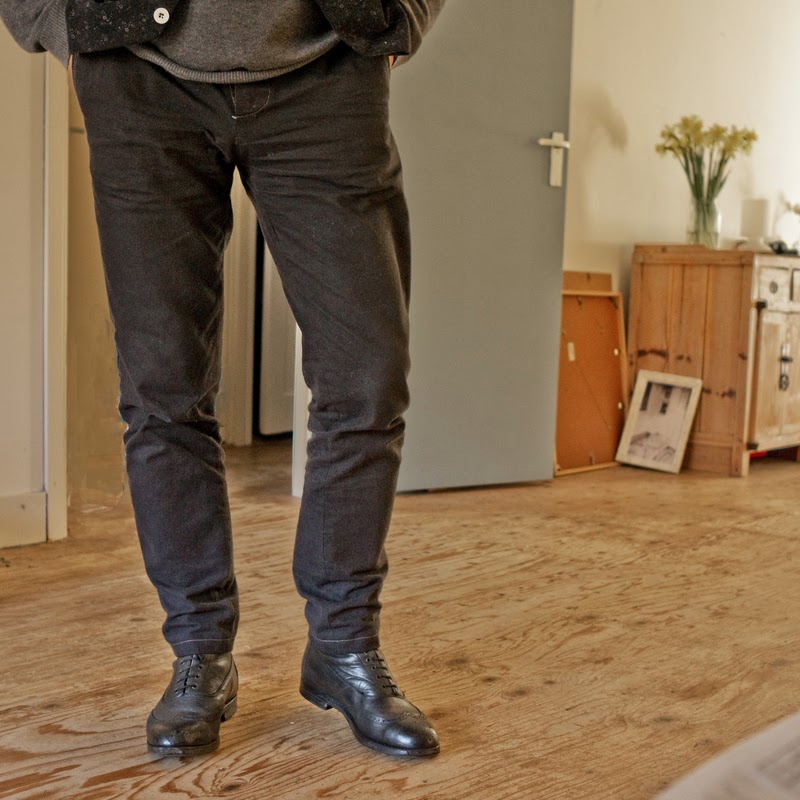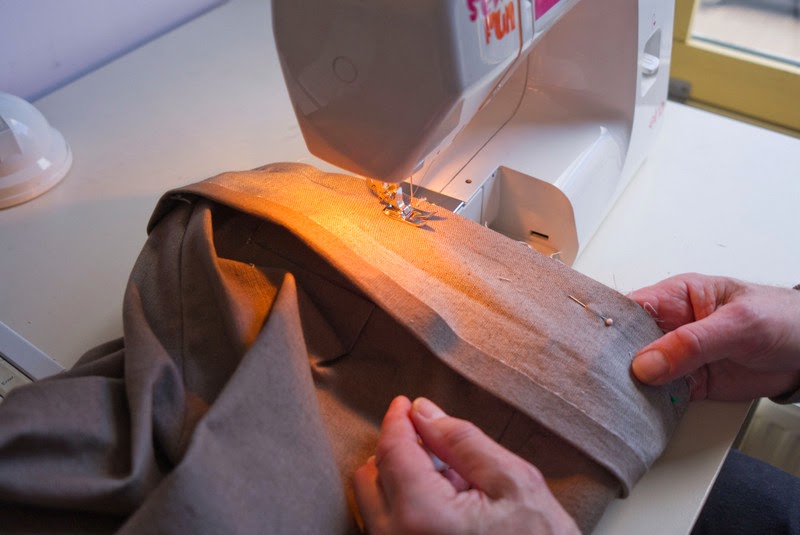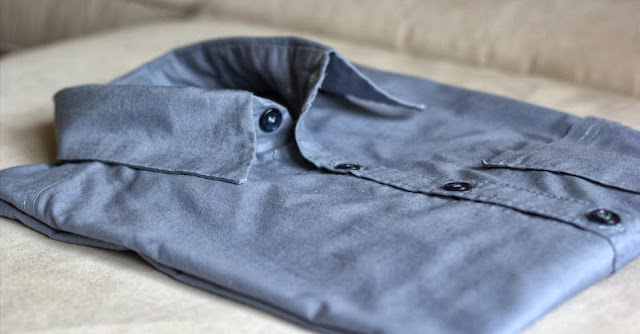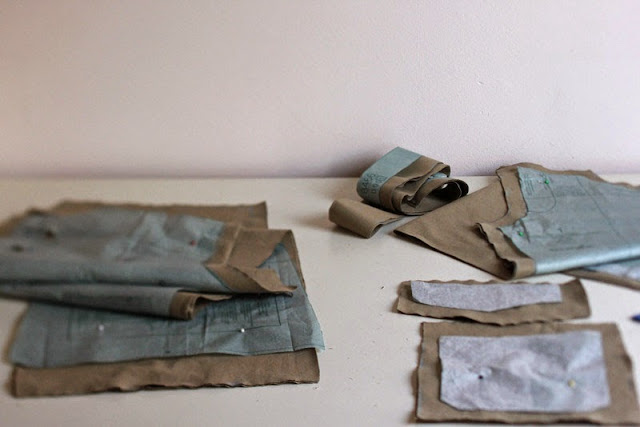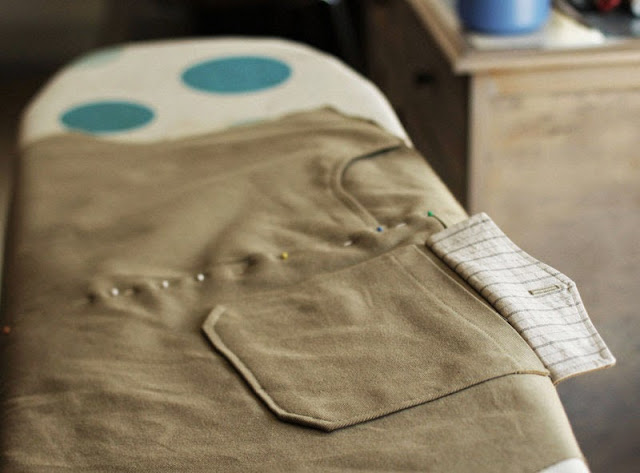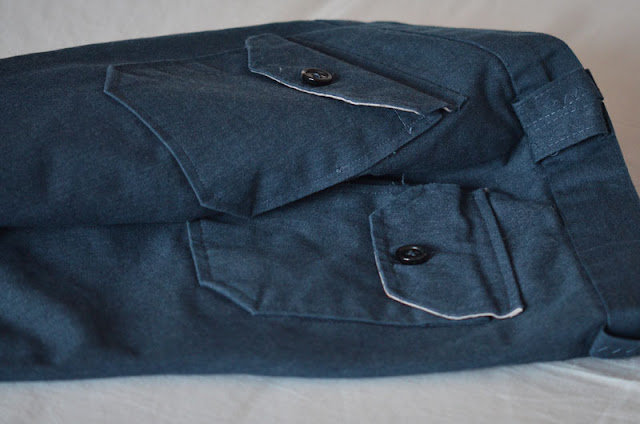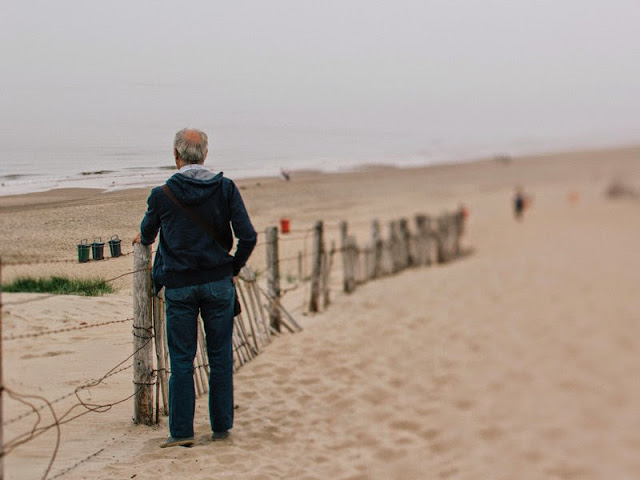Looking around on the site of a webshop that sells clothing patterns I saw a pattern from Burda (nr 6933) that attracted me. Nowadays pants are slender cut, so I thought let's give it a try and ordered the pattern.
I had no idea if such pants with narrow legs would suit me, so I made a trial version from a piece of pink denim I still had in stock.
Not that I ever would consider wearing pink pants, But doing a trial version, you also can try your hand in dyeing the fabric into a more appropriate color, such as velvet black.
As recommended by Burda, I selected the size according to the width at waist level. The pants will closely fit at the hips, but also on the calves, so after comparing the real size of my calves with the size at the pattern, I added a few millimeters to prevent a skinny effect.
And, since I do not like a zipped fly, I made a button fly.
The result was rather satisfactory. Slender cut black velvet denim pants. Slit pockets in the side seams, welt pockets on the back.
Here are some more pics of this model.
Since this was a trial version, I subsequently made a final edition, this one from liver-colored denim.
The sample had told me that the size could be slightly wider, some millimeters in the upper part and the upper legs and almost a centimeter near the hem in the legs.
Above picture on the left shows me setting the waistband. (Tip: if you have a fabric with a width of some 140 cm you can at one go cut a strip for the waistband, unless you have a belly size of plus 140 cm. Another tip: press the weft in the fabric before setting the waistband).
Once more: the result was rather satisfactory,
PS 1. In the USA Burda comes as Burdastyle. I do not know if they sell this pattern, but if you enter "Burda 6933" in a search machine you undoubtedly will find webshops that sell this pattern to US customers
PS 2. If you are from the USA you may be used to added seam allowances in commercial patterns, please note that Burda patterns have NO seam allowances.
